Removing PEX Rings: Techniques and Best Practices
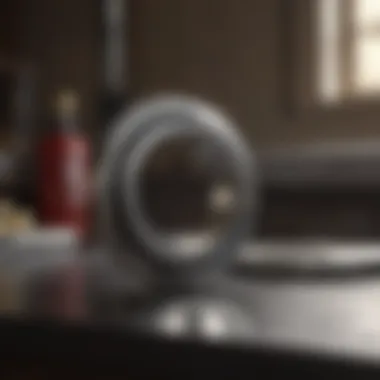

Intro
This article will delve into the intricate process of removing PEX rings, an essential task for anyone involved in plumbing systems that utilize PEX, or cross-linked polyethylene. PEX has become increasingly popular in both residential and commercial plumbing due to its flexibility, resistance to scale and chlorine, and the fact that it does not corrode. However, situations often arise where a PEX connection needs to be dismantled, whether due to repairs, upgrades, or rerouting. Understanding the techniques and best practices for ring removal is critical in ensuring systems function correctly without incurring unnecessary damage.
Importance of the Topic
The ability to effectively remove PEX rings is crucial for homeowners and professionals alike. Improper removal can lead to pipe damage, leaks, or even system failure. The consequences could be costly, requiring professional help or extensive repairs. Thus, mastering the skill of PEX ring removal enhances operational efficiency and extends the life of the plumbing system. This guide is designed to provide insight into effective methods and tools, ensuring a seamless experience whether you are a seasoned plumber or a DIY enthusiast.
Prelims to PEX Pipes
In recent years, PEX pipes have gained immense popularity in both residential and commercial plumbing applications. This article will explore why understanding PEX pipes is important, especially when it comes to removing PEX rings.
Benefits of PEX Pipes
PEX, or cross-linked polyethylene, offers several benefits over traditional plumbing materials like copper or PVC. One significant benefit is flexibility. PEX pipes can bend around corners, minimizing the number of joints needed, which reduces the potential for leaks. This flexibility also allows for faster installation, making them ideal for both large-scale projects and simple home repairs.
Another compelling advantage is the resistance to corrosion and scale buildup. Unlike metal pipes, PEX does not corrode over time. This property enhances water quality and ensures the longevity of piping systems. Moreover, PEX is less likely to freeze in cold temperatures due to its ability to expand without breaking.
Considerations When Using PEX Pipes
While the benefits of PEX are substantial, there are several considerations to keep in mind. For instance, PEX cannot be exposed to direct sunlight for extended periods, as UV exposure can degrade the material. It is essential to install it in well-protected areas to avoid this issue.
Furthermore, understanding the various types of fittings and rings associated with PEX is crucial when working with these pipes. Failure to remove PEX rings correctly or improperly connecting them can lead to leaks or costly repairs down the line. This is why this article emphasizes removing PEX rings effectively, outlining the necessary tools and best practices to achieve a successful removal process.
"The greater flexibility and resistance to corrosion that PEX pipes offer are matched only by the careful consideration that must be taken during installation and maintenance."
Understanding PEX Rings
PEX rings play a vital role in the installation and maintenance of PEX plumbing systems. Understanding these rings is essential for any homeowner or DIY enthusiast looking to manage their plumbing effectively. The rings primarily serve as connectors that secure PEX pipes and maintain the integrity of plumbing systems.
When installing PEX, using the correct rings is crucial. Crimp rings, clamp rings, and push-fit connections each have unique applications and advantages. Familiarity with these types helps in selecting the most suitable one for a specific job, ensuring durability and reliability in plumbing setups.
The benefits of understanding PEX rings extend beyond mere installation. For instance, knowledge about these rings enables homeowners to troubleshoot issues more efficiently. If a connection fails, recognizing the type of ring involved assists in swift identification of the problem. Additionally, lacking this knowledge can lead to improper removal or replacement, increasing the risk of damaging the pipes.
Moreover, with proper understanding, one can avoid common pitfalls during the removal process, which can prevent costly repairs. Each type of ring has its removal technique, and not adhering to these methods could result in pipe damage. Therefore, comprehending the properties and functions of PEX rings becomes indispensable for successful plumbing management.
Overall, grasping the nuances of PEX rings allows for informed decisions in both installation and maintenance, elevating the longevity and efficiency of plumbing systems. Through this knowledge, homeowners can engage more profoundly in their plumbing projects, enhancing not only their skills but also the quality of their home’s infrastructure.
"Knowledge about PEX rings is crucial for maintaining a reliable plumbing system and avoiding costly mistakes."
Understanding PEX rings is thus not just beneficial—it's essential for effective and responsible home management.
Types of PEX Rings
Understanding the various types of PEX rings is crucial for proper plumbing practices. Each type serves a distinct purpose and comes with its own set of advantages and considerations. Recognizing the specifics of each category will lead to better decision-making during installation, maintenance, or removal. This knowledge is particularly beneficial for homeowners undertaking DIY plumbing projects and for professionals aiming for efficiency.
Crimp Rings
Crimp rings are popular in PEX pipe systems due to their reliability. Made of metal, typically brass or copper, these rings secure the PEX tubing onto fittings by crimping them together. The process involves using a specialized crimping tool that compresses the ring around the tubing, creating a tight seal.
The main advantage of crimp rings is their strong connection, which minimizes potential leaks. However, removing crimp rings requires special attention. If not handled properly, the tubing can be damaged. It is advisable to use precise cutting tools and perform the removal in a controlled manner.
Clamp Rings
Clamp rings, often made of stainless steel, also play an integral role in PEX systems. Similar to crimp rings, they are used to secure the tubing onto fittings, but they utilize a different method. Instead of crimping, the clamp is tightened using a screw mechanism, allowing for a more forgiving approach to adjustments.
One notable benefit of clamp rings is their ease of adjustment. If modifications are necessary, removing the clamp is straightforward, allowing for flexibility during installation. However, like crimp rings, they can get stuck during removal, leading to challenges. Proper tools are essential to avoid damaging the PEX pipe when unclamping.
Push-Fit Connections
Push-fit connections offer a modern alternative to traditional rings. With this system, no rings are needed. Instead, the PEX pipes are pushed directly into the fittings, which have a built-in mechanism to hold the tubing in place.
The primary advantage of push-fit connections lies in their simplicity and speed of installation. They are particularly useful for home improvement projects, as they do not require specialized tools for connecting or disconnecting. Nonetheless, caution is advised during removal, as improper techniques could complicate future installations or lead to leaks.
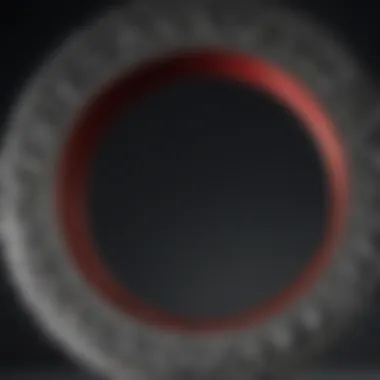

"Understanding the types of PEX rings can drastically improve the efficiency of plumbing work and reduce the likelihood of issues down the line."
In summary, understanding the differences between crimp rings, clamp rings, and push-fit connections is essential for anyone involved in PEX plumbing. Each type has specific uses and considerations, which can influence installation and maintenance strategies. By equipping oneself with this knowledge, you enhance the quality of the work and contribute to the longevity of your plumbing systems.
Importance of Correct Ring Removal
Removing PEX rings correctly is vital for several reasons, particularly in the context of plumbing systems where these components play a crucial role. Failure to remove these rings properly can lead to various complications that may impact the integrity and functionality of the plumbing. Let's explore some specific elements that highlight the significance of doing this correctly.
Maintaining Pipe Integrity
One of the primary concerns in removing PEX rings is maintaining the integrity of the piping system. If the ring is removed without the necessary precautions, it can cause damage to the PEX pipe itself. This might lead to leaks or weaken the pipe material, potentially resulting in costly repairs or replacements.
Avoiding Cross-Contamination
During the removal process, it is essential to ensure that no debris or material is introduced into the pipe system. Correct removal techniques mitigate the risk of cross-contamination, which could impair water quality. Clean handling of the PEX rings ensures that the plumbing system remains free from impurities, providing safe drinking water.
Long-Term Cost Efficiency
Investing time to learn and apply proper removal techniques can save homeowners significant money in the long run. By avoiding potential damage and the need for emergency repairs, individuals can ensure a more sustainable plumbing system. In the landscape of home maintenance, cost-effective practices lead to better management of resources over time.
Safety Considerations
Another important aspect of correct PEX ring removal is safety. Improper removal could lead to accidents, especially if tools malfunction or the removal process unexpectedly requires excessive force. Adhering to best practices minimizes risks associated with installations and repairs, making the plumbing environment safer for everyone involved.
Ensuring Efficient Reinstallation
Correctly removing a PEX ring helps in preparing for the reinstallation of new fittings or connections. Any damages incurred during the removal may complicate the process of fitting new components, causing alignment issues and improper connections. By focusing on accuracy during removal, it ensures that reinstallation can proceed without unnecessary obstacles.
In summary, the correct removal of PEX rings is fundamental in maintaining a reliable and effective plumbing system. Focusing on these aspects helps ensure that the plumbing remains functional, safe, and cost-effective for the long term.
Necessary Tools for Removal
Removing PEX rings efficiently requires specific tools that ensure both precision and safety. The correct tools play a crucial role in preventing damage to the PEX pipes, which can lead to expensive repairs. Understanding these tools and their functions aids in streamlining the removal process while minimizing risks.
Using the right equipment also enhances the overall experience, making the task less daunting. Therefore, investing in quality tools cannot be understated. This section delves into the essential tools for removing PEX rings and highlights their significance.
Cutters
Cutters are pivotal when it comes to PEX ring removal. A PEX cutter is designed to provide a clean and straight cut. Utilizing the appropriate type of cutter prevents jagged edges or cracks in the pipe, ensuring a smooth surface remains after the cut.
When selecting a cutter, consider:
- Blade Quality: Look for durable, stainless steel blades that resist wear and tear.
- Ergonomics: A comfortable grip reduces fatigue, especially during long tasks.
- Size: Ensure the cutter fits your specific PEX size requirements.
Proper use of the cutter involves positioning it around the PEX pipe and applying even pressure until the pipe is sliced through completely. This careful approach ensures a precise removal, allowing the subsequent steps to proceed smoothly.
Crimping Tools
Crimping tools are essential for those who are dealing with crimp rings. These tools create a secure connection when installing PEX. However, when it comes to removal, they can also be useful if the crimp rings need to be cut off or altered. The tool can apply enough force to grip and twist the ring effectively, detaching it from the pipe without harming the PEX itself.
When using crimping tools for removal, some points to consider include:
- Adjustable Settings: Choose a tool that can be adjusted for different ring sizes.
- Material: Opt for sturdy materials to withstand force.
Handling crimping tools requires focus, as applying undue pressure can damage the pipe. Take your time to apply steady pressure while ensuring the tool is correctly aligned with the ring.
Deburring Tools
After removing PEX rings, it is vital to maintain the integrity of the pipe’s surface. Deburring tools come into play as they smooth any rough edges left behind after cutting. This step is critical because sharp edges might lead to leaks or complications during reinstallation.
A suitable deburring tool can help achieve the following:
- Surface Preparation: Ensures the pipe is ready for new fixtures or connections.
- Ease of Use: Designed to be user-friendly, making the process straightforward.
To use a deburring tool, lightly run the edge around the cut spot, removing any burrs or irregularities. This maintains a high standard of workmanship for your PEX system.
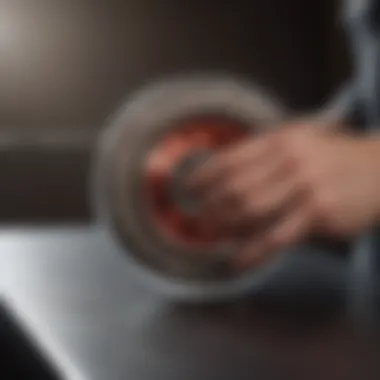
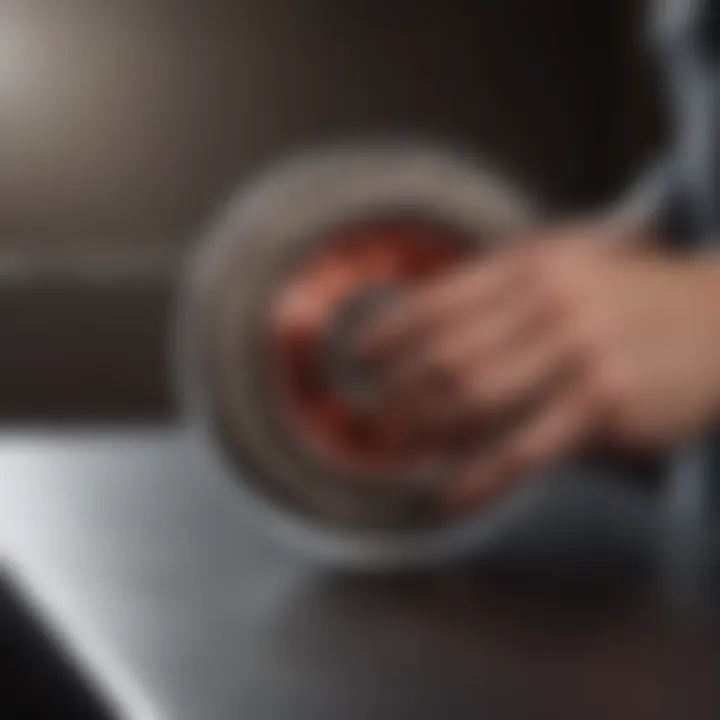
"Using the right tools reduces the risk of damage and enhances the overall durability of your plumbing system."
In summary, having the correct tools is fundamental in the process of removing PEX rings. Cutters, crimping tools, and deburring tools each contribute to a successful project. Invest in these instruments to ensure efficient and safe removal, improving the reliability of your PEX plumbing.
Step-by-Step Removal Process
The Step-by-Step Removal Process is crucial in the article as it delineates a systematic approach to tackle the removal of PEX rings. Understanding this process minimizes errors. Following these steps enhances the efficiency, reducing time spent on the task. Moreover, it ensures that underlying pipes are not damaged, which could lead to more complex plumbing issues later. Finally, it equips both professionals and DIY enthusiasts with a clear framework to manage PEX systems effectively.
Preparing the Work Area
Before starting any plumbing task, preparation of the work area is essential. A clutter-free and well-lit space allows for greater focus and reduces the likelihood of accidents. Begin by clearing any furniture or obstructions that may impede your movement. Lay down a drop cloth to protect the area from debris and spills. Ensure you have easy access to the plumbing system being worked on.
It can also be beneficial to gather all necessary tools in one place. This includes cutters, crimping tools, and deburring tools. With everything at hand, you can proceed without interruption. A hazardous work environment could result in stress and mistakes, so take the time to prepare first.
Lifting the Existing Plumbing
Lifting existing plumbing may prompt a range of considerations. Often, plumbing is installed in tight spaces, making access challenging. Therefore, it is important to practice care. Use appropriate lifting techniques to avoid personal injury. Supporting the pipes ensures that any strain is distributed evenly. If pipes are connected closely to walls or other utilities, assess the situation carefully to avoid damaging surrounding areas.
Moreover, while lifting, check for any signs of wear or leaks. If you encounter issues, it may be more prudent to consult a professional before proceeding. Ensuring that the plumbing is secure is paramount before moving forward.
Cutting the PEX Material
Cutting the PEX material requires precision and a steady hand. Use quality cutters designed for PEX to make a clean cut. Inadequate tools may damage the pipe, increasing the difficulty of the removal process. The cut should be straight and made as close to the ring as possible.
This action brings two significant benefits. First, it allows for easier ring removal, and second, it prevents any unintended damage to the plumbing system. Pay attention to the orientation of the cut to ensure it does not interfere with future installations.
Removing the Ring
Once the PEX material has been cut, turning your attention to the actual removal of the ring is vital. Depending on the type of ring—be it a crimp or clamp ring—different techniques may be employed. For crimp rings, a specific crimp removal tool can facilitate the process. Position the tool properly around the ring and squeeze firmly until it opens. This minimizes the risk of damaging the pipeline. Alternatively, clamp rings may require cutting through the band to free the connection.
It is also essential to check the area for any small debris or remnants after the ring removal. Addressing these elements is necessary for establishing a clean workspace for future repairs or installations. Pay attention to the condition of the pipe after the ring has been removed, ensuring that it does not have any defects or burrs.
"Removing PEX rings with the right process reduces risks and enhances efficiency."
Understanding and executing each of these steps precisely helps in establishing a solid foundation for managing PEX systems. Following this structured guide encourages both confidence and competence in plumbing tasks.
Common Challenges During Removal
Removing PEX rings is not a straightforward task. It can present specific challenges that require careful attention. Understanding these challenges is crucial for anyone looking to perform plumbing work efficiently without causing damage. Among the most common issues are stuck rings and the potential for damage to the surrounding pipes.
Addressing these challenges effectively allows for a smoother operation. It helps in ensuring that the integrity of the plumbing system is maintained. Additionally, awareness of these difficulties can save time and reduce frustration during the removal process.
Stuck Rings
One of the primary concerns when removing PEX rings is dealing with stuck rings. This problem often occurs when the rings have been crimped too tightly or have been in place for an extended period. Factors such as corrosion or the wear and tear of materials can contribute to this stickiness. To effectively deal with stuck rings, one must first avoid the urge to apply excessive force.
Instead, here are some effective strategies to consider:
- Apply Heat: Gently heating the ring can sometimes loosen it. Use a heat gun on a low setting, but be cautious to avoid overheating the PEX pipe itself.
- Use a Lubricant: A small amount of penetrating oil can help. Apply it around the edges of the ring to reduce friction.
- Pry with Care: A flathead screwdriver can be utilized. Carefully insert it under the ring and apply even pressure to lift it.
Each of these methods has its own risks and benefits, and selecting the right approach depends on the specific situation.
Potential for Damage
Another challenge lies in the potential for damage during the removal process. Incorrect techniques can lead to significant issues, including:
- Damaging the PEX Pipe: If excessive force is applied, it can cause the PEX material to crack or distort. This can lead to leaks and the need for complete system replacement.
- Disturbing Components: Surrounding plumbing components may also be affected. A careless approach can lead to the misalignment of joints or other connections, necessitating further repairs.
- Safety Hazards: Sharp tools and improper handling can lead to injuries. Wielding tools without adequate control increases the risk of accidents.
To minimize these risks, practitioners should always:
- Assess the situation before removing any rings.
- Ensure that work is performed in a well-lit workspace.
- Use properly maintained tools to avoid accidents.
By being cautious and aware of these challenges, individuals can efficiently manage the removal of PEX rings while minimizing risk and ensuring a successful outcome.
Post-Removal Inspection
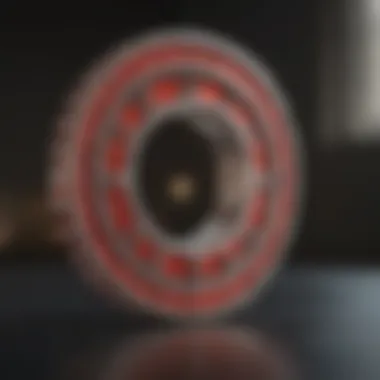

After successfully removing a PEX ring, the post-removal inspection is crucial. This step ensures the integrity of the pipe and evaluates if the removal process was performed correctly. Ignoring this aspect can lead to future plumbing issues, including leaks or improper connections. It allows for early identification of any potential problems, ensuring that your plumbing system remains functional and efficient.
Assessing the Pipe Condition
Evaluating the condition of the PEX pipe after ring removal is an essential step. Check for any signs of damage, such as cracks or excessive wear. Ensuring that the pipe is intact helps prevent leaks in the future. Here are the aspects to consider:
- Visual Inspection: Look for any visible damage on the surface. Small cracks might not be apparent but can lead to serious problems over time.
- Flexibility Test: Gently bend the PEX pipe. It should easily return to its original shape. If it remains deformed, it might be compromised.
- Integrity Check: Apply slight pressure to ensure the pipe does not collapse. Any significant deformation indicates the need for replacement.
By checking these factors, you can ascertain whether the pipe is suitable for immediate reuse or if it requires replacement. This diligence enhances plumbing safety and longevity.
Cleaning the Surface
Once the inspection is complete and the pipe condition is satisfactory, it is essential to clean the surface where the PEX ring was removed. This preparation is vital for installing new rings or fittings, ensuring a secure and leak-free connection. Here are steps to keep in mind:
- Debris Removal: Use a clean cloth to wipe away any debris or residue left from the previous installation.
- Cleaning Solutions: For tougher residues, consider using a mild detergent mixed with water. Apply this solution and wipe with a non-abrasive cloth. Avoid harsh chemicals that can damage the PEX.
- Final Rinse: After applying cleaning agents, ensure that the surface is rinsed thoroughly with clean water. This step prevents any cleaning solutions from interfering with the new connection.
Clean surfaces allow for better fittings and ultimately contribute to the overall reliability of your plumbing system.
Replacing PEX Rings
Replacing PEX rings is an essential aspect of maintaining a PEX plumbing system. Understanding the process of replacing these rings allows for the continued integrity and functionality of your plumbing. Not only does it ensure secure connections, but it also minimizes the risk of leaks or other plumbing failures that could incur costly repairs.
Importance of Proper Replacement
Having a properly functioning PEX system begins with the quality of its components. PEX rings, whether crimp or clamp types, serve as critical connectors that maintain the pressure required in a plumbing system. When replacing PEX rings, it is important to match the specifications of the original rings to avoid issues down the line. Incorrect sizes or types can lead to weak bonds, thus risking leaks.
In addition, ensuring the new rings are compatible with the existing piping can save time and resources. Using the right materials promotes efficiency in both installation and future maintenance procedures.
Considerations During the Replacement Process
Several factors must be considered when replacing PEX rings:
- Material Compatibility: Always choose rings that match the type and size of the PEX pipe.
- Equipment Quality: Employ good quality tools designed specifically for working with PEX to avoid damaging the pipes during installation.
- System Pressure: Consider the pressure requirements of your system to ensure that the new rings can withstand that pressure without failure.
Benefits of Timely Replacement
Replacing PEX rings in a timely manner provides numerous benefits:
- Leak Prevention: New rings reduce the likelihood of leaks, thus safeguarding your home from water damage.
- Increased Longevity: Proper maintenance, including timely ring replacement, can extend the life of a PEX system.
- Cost Efficiency: Regular inspections and replacements can prevent more significant problems, resulting in more economical long-term repairs.
"Preventive maintenance is always more cost-effective than emergency repairs."
Understanding the importance of replacing PEX rings is critical for homeowners and DIY enthusiasts alike. It is not merely a task, but an investment into the efficiency and durability of your plumbing system. Each step taken during replacement should be approached with care, ensuring that the PEX system remains reliable for years to come.
Tips for Efficient PEX Management
Efficient PEX management is crucial when dealing with plumbing systems involving PEX pipes and rings. Understanding how to properly manage PEX materials not only enhances the longevity of your plumbing system but also minimizes the frequency of repairs or replacements. Several specific elements play a vital role in effective management. These include regular maintenance practices and the use of quality materials.
Regular Maintenance Practices
Regular maintenance of PEX plumbing is essential to prevent issues down the line. It is not simply about solving problems as they arise; it is about ensuring that those problems do not occur in the first place. Here are some practices to consider:
- Routine Inspections: Inspect the PEX pipes for any visible signs of wear, leaks, or damage. Doing so can help catch issues before they escalate.
- Temperature Control: Ensure that PEX piping does not freeze by maintaining a reasonable temperature in areas where pipes are installed. Insulating pipes in colder climates can prevent freezing.
- Clearing Debris: Regularly check that debris does not accumulate near PEX fittings. This can help in keeping connections secure and functioning well.
Taking these steps will ensure that both the PEX rings and the piping remain in optimal condition over time.
Using Quality Materials
One cannot underestimate the significance of using quality materials in PEX plumbing systems. Inferior materials may ultimately result in premature failures and increased costs. When managing PEX, always opt for:
- Top-Quality PEX Rings: Investing in high-quality PEX rings from credible manufacturers ensures durability and reliability.
- Recommended Tools: Using tools that are designed specifically for PEX installations and removals will result in better outcomes and lower risks for damages.
- Proper Storage: Storing PEX materials in appropriate conditions to avoid exposure to elements that could lead to compromising the integrity of pipes and rings.
By adhering to these practices, you not only improve the effectiveness of your PEX management but also create a more reliable plumbing system that can withstand the test of time.
Efficient management of PEX systems leads to fewer disruptions, reducing overall costs in the long run.
The End
In the realm of PEX plumbing systems, understanding how to remove PEX rings effectively is a cornerstone of efficient maintenance. This article emphasizes the essential elements connected to the correct removal of these rings. Elements such as having the right tools, following a structured step-by-step process, and being mindful of potential challenges are fundamental for both homeowners and professionals alike.
By mastering the removal of PEX rings, individuals can prevent unnecessary damage to piping systems, which can lead to costly repairs. It's important to recognize that minor mistakes, like improper cutting or forceful removal, can compromise the integrity of the pipes. Therefore, attention to detail and adherence to best practices ensure a smoother operation.
Moreover, this knowledge empowers homeowners to take charge of their plumbing systems. Instead of relying solely on professionals, they can manage small projects themselves, saving time and money. Understanding when to seek help versus when to act independently is key in PEX management.
Ultimately, effective PEX management not only enhances the lifespan of plumbing installations but also fosters a sense of confidence in maintaining home infrastructure. Therefore, reflective discussions from this article equip readers with an analytical approach to their plumbing needs, enabling both immediate and long-term benefits in home maintenance.







